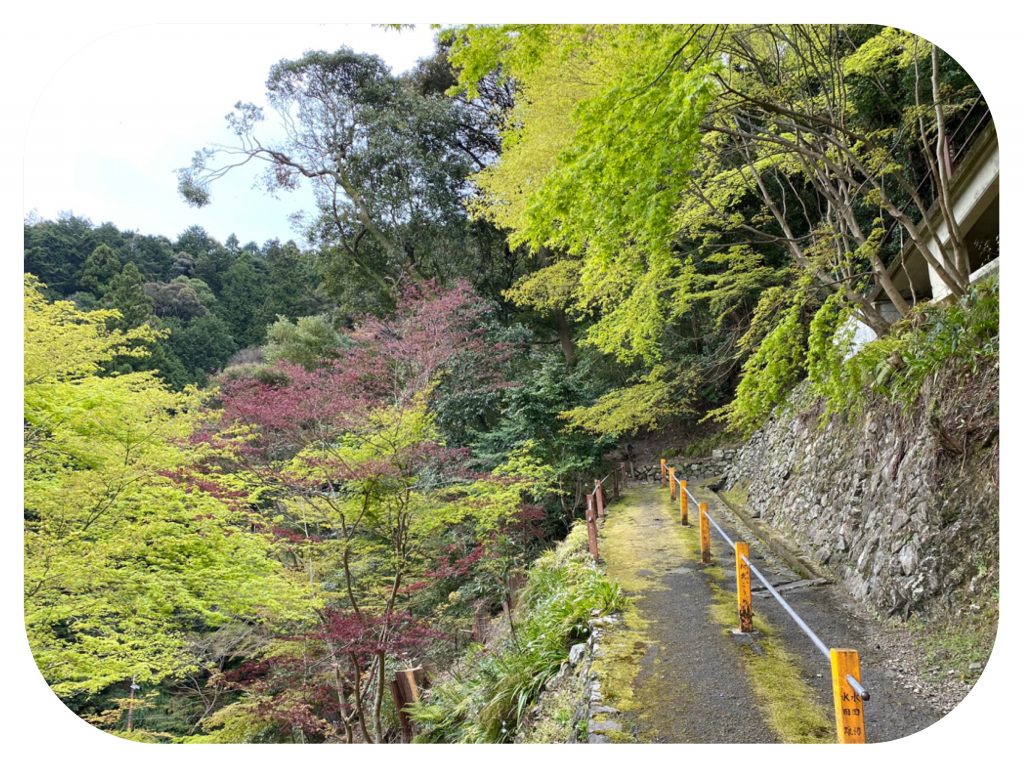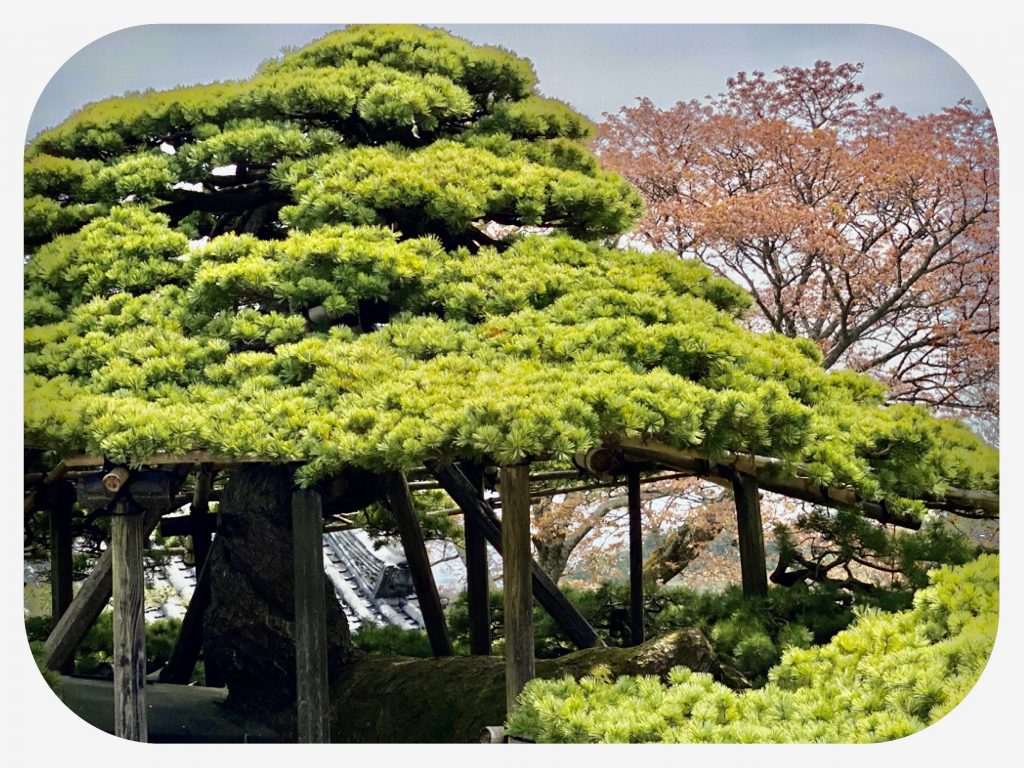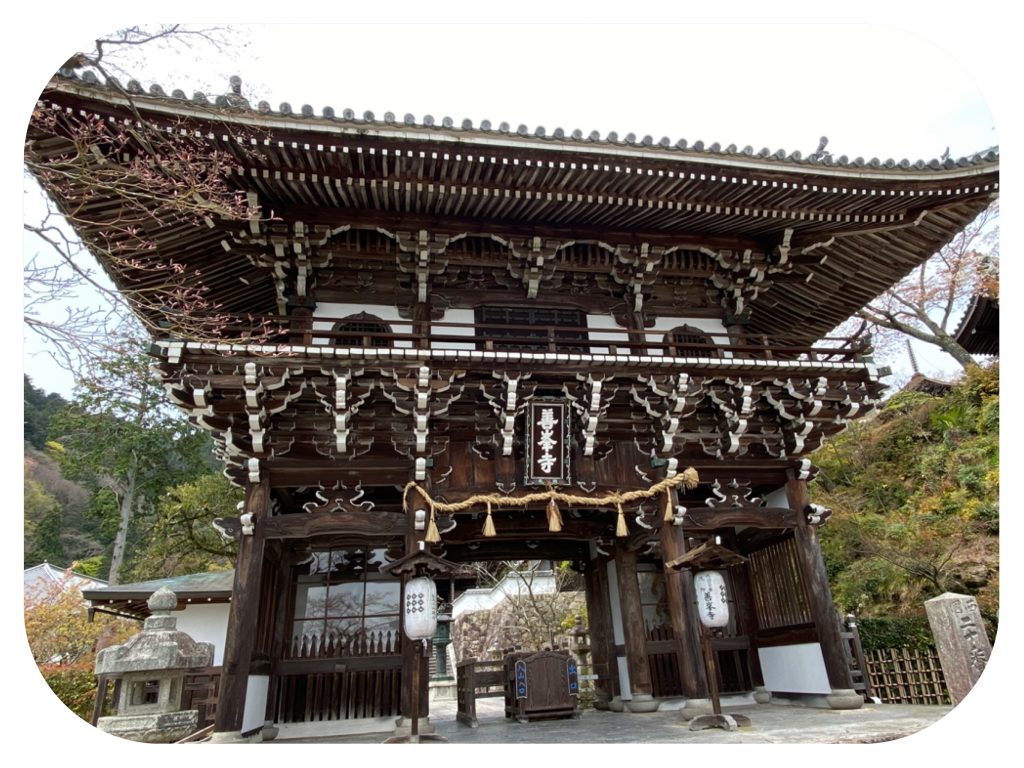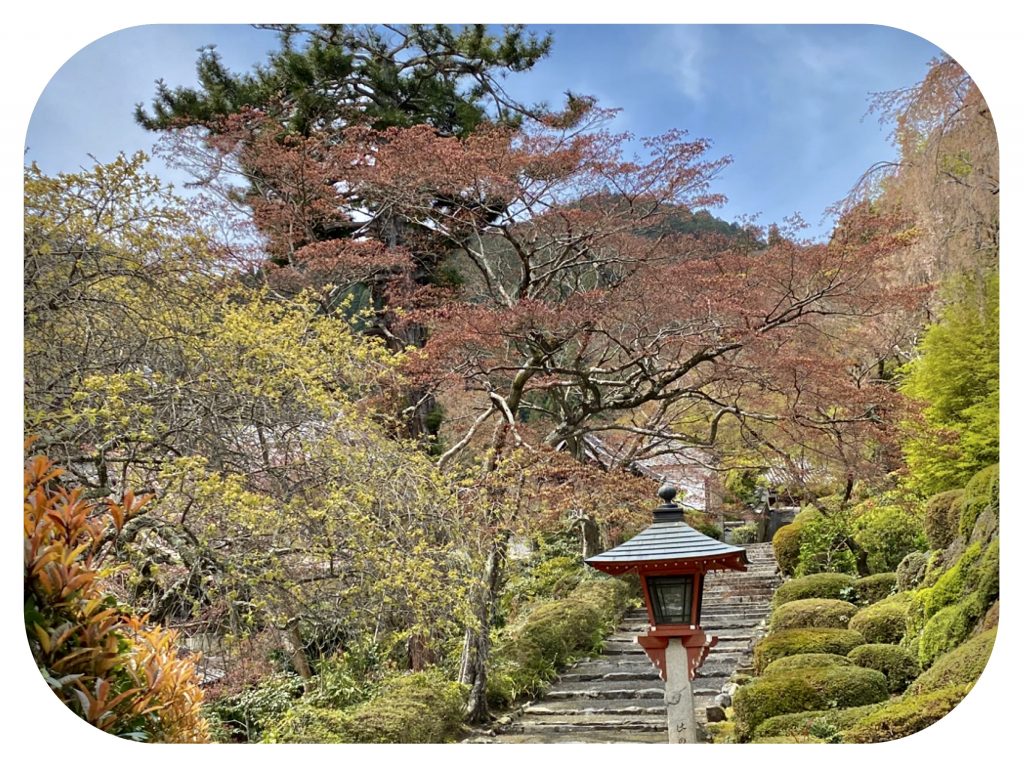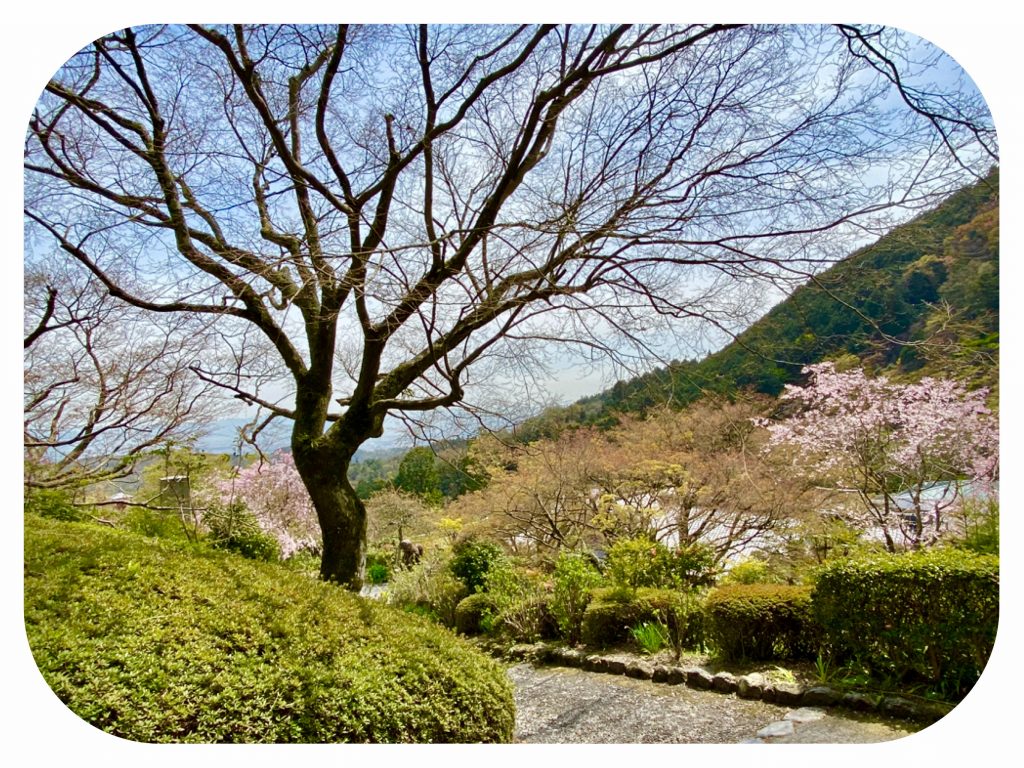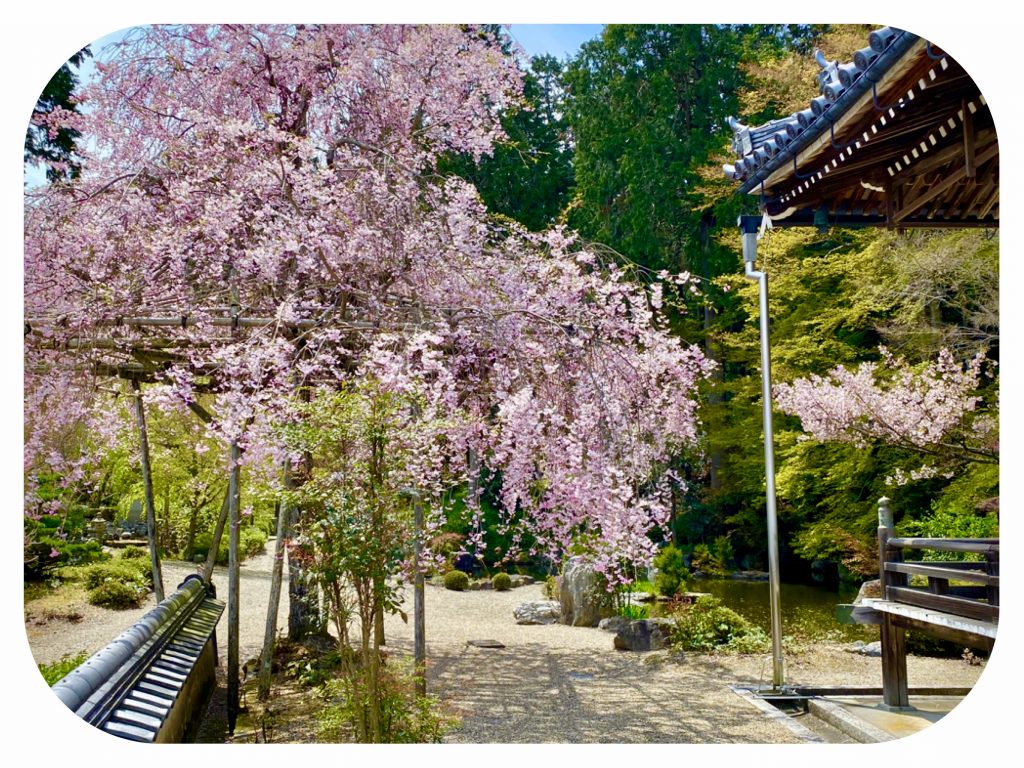Day 29 - The Road To Enlightenment - Walking The Saigoku Kannon Pilgrimage - Temple #20 Yoshiminedera Temple, Kyoto, Japan

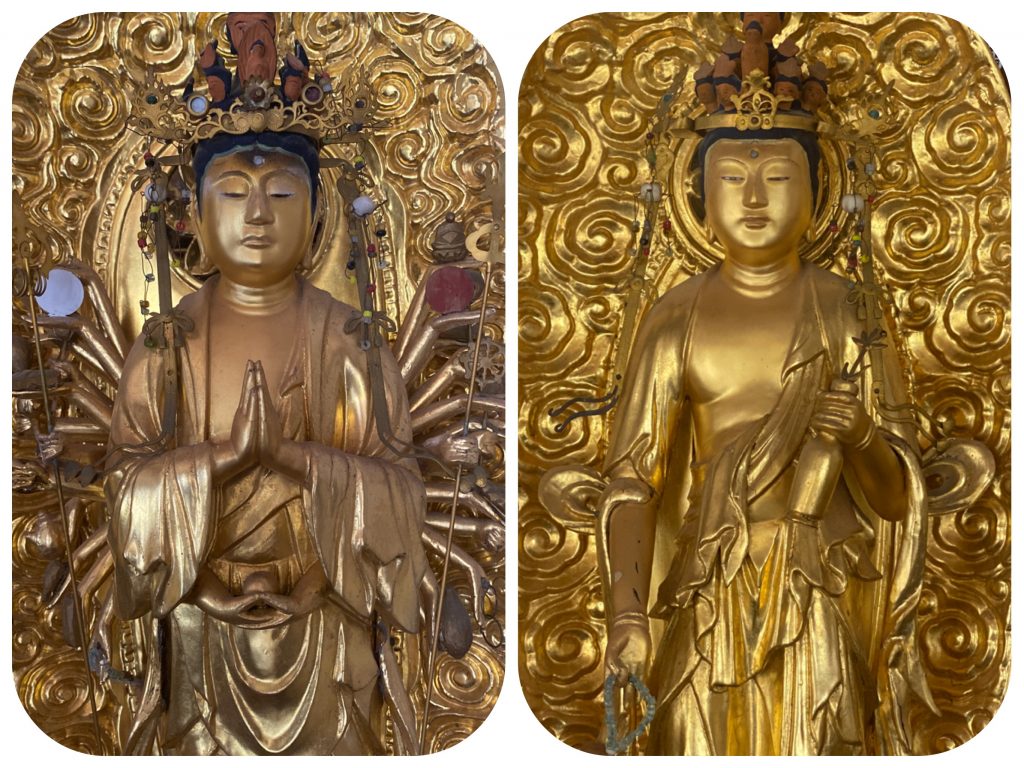
Day 29 - The Road To Enlightenment - Walking The Saigoku Kannon Pilgrimage -
Temple #20 Yoshiminedera Temple, Kyoto, Japan
The climb up to Yoshimine-dera temple is along a very steep path.
Yoshiminedera (吉峰寺) temple belongs to the Tendai sect of Japanese Buddhism.
A priest named Gesan from Enryakuji temple established Yoshiminedera as a personal retreat in 1029.
In 1467 the temple was destroyed in the Onin War, but was rebuilt in 1621.
The temple's main objects of worship are a Kannon statue carved by Gesan and a Kannon statue given to the temple by Emperor Gosuzaku in 1042.
The temple occupies the very lush slopes of mount Ponpon in the western mountain range of Kyoto.
It is a beautiful ancient temple situated in what feels like, a fairytale landscape.
Beautiful temple buildings, old pagodas, and blooming trees harmoniously create a feeling of paradise, in a world that now feels like it has slid into hell.
The city of Kyoto looks totally different during these coronavirus times.
Department stores are closed, luxury goods shops are all closed, all the shops that cater to the tourist industry are closed, parking lots are empty and many chain store and eateries are also closed.
Coming to the mountains feels like escaping a sad and gloomy dream reality, for something eternal and beautiful.
Perhaps the most beautiful and symbolic thing at this temple is the 600 year old dragon pine tree.
It is called “The Gliding Dragon” Tree, because it has been trained to grow horizontally instead of vertically, and it stretches in two directions for over fifty meters (150 feet.)
It is still very much alive, with vivid green leaves and branches.
While trying to take a photo of the dragon tree that will show even a small part of how glorious it looks, Jules said to me, “If a tree can live to be 600 years old and still be growing, it means that we, as human beings, can do the same!”
I agreed with him.
Human bodies are composed of the same chemical components as a tree, and what makes up all living creatures and plants.
Almost 99% of the mass of the human body is made up of six elements: oxygen, carbon, hydrogen, nitrogen, calcium, and phosphorus.
And about 0.85% is composed of another five elements: potassium, sulfur, sodium, chlorine, and magnesium.
All these eleven elements are necessary for all of life.
Beside their elemental makeup, trees also have a highly sensitive nervous system like humans do, sensitivity to light, group consciousness and memory.
Without any doubt, if a tree can live for hundreds of years, or even for two thousand years, as they do in New Zealand, humans have the capacity to do the same.
By the main temple hall, I met a group of devout Buddhist people, a few men and women, who were praying and chanting.
I have never seen anyone chant quicker than they did.
They completed their series of chants with beautiful mandala hand mudras, snapping fingers and forming flower patterns with their fingers.
One of them used a handheld bell and chime to emphasize passages in their chanting.
I wanted so much to learn the hand mudras that they did so prolifically and confidently.
We took a leisurely walk up the mountain, admiring the stunning landscaping and views of the surrounding mountain peaks, as well as the views of the city of Kyoto in the far distance.
I wanted to stay in that paradise land, but we still had to walk a long way down back to Kyoto city.
I will have to keep all this beauty in my heart...
After doing our own chant and prayer for the healing of the planet and the enlightenment of all human beings, we collected our stamps, and started to walk down the steep mountain.
We passed by mountain villages with houses and small shops selling fresh bamboo shoots.
Almost every house had a small tub of water filled with bamboo shoots for sale.
One place also sold bamboo baskets and lengths of bamboo that are used instead of pieces of wood.
We passed by a few eateries that prepared dishes made from bamboo shoots, and some Japanese people were buying and dining in those places.
A man in a small shop explained to us how to prepare these fresh bamboo shoots.
“You need to peel the brown outer skin, soak it in water so it will not brown or dry up, slice it, boil it or cook it in dishes.
You can also just slice it into paper thin slices, and serve it raw with wasabi and soy,” he told us.
The walk was pleasant and scenic.
It was nice to be in the mountains, instead of in an urban environment for most of the day.
We finally reached the fields outside of Kyoto.
We saw more walkers, out for a day of hiking.
We stopped at a rural tofu factory, that had a small shop selling all sorts of tofu and soy products.
We bought a small soy ice cream, a creamy tofu and roasted soybeans coated with roasted soy powder.
Outside the tofu shop, we met two other couples who were out on a day walk.
One of the men told us that he is now retired, but he was a teacher at Kyoto University.
He taught chemistry, and visited Colorado three times as part of his job.
He asked us what we were doing here, and after we told him that we were walking the Saigoku, he told us that he too had done the Saigoku pilgrimage, but by using a car, he said and laughed apologetically.
Still, we were so happy to meet fellow pilgrims, who know about the pilgrimage and thought it was worthy to do.
By now, we have met many, many people who have done the Saigoku 33 Kannon Pilgrimage.
This means that many people in Japan have visited the sacred temples and more importantly, have chanted the Heart Sutra, remembering that:
You are NOT a body.
Your are NOT the mind
You are NOT your feelings.
You HAVE a body, a mind and feelings and thoughts only pass through your mind.
You should not be guided by your senses, nor follow your feelings, appetites and impulses.
Learn to MASTER yourself, and climb to the summit of the mountain.
There, you shall find your Higher Self-God.
Beyond illusions, In the vast emptiness,
Your Higher Self dwells forever in Nirvana....
On our walk towards the city, we saw kids playing in parks, and a timeless sight of a father and son collecting butterflies.
They carefully placed the yellow butterfly that the boy caught, in a plastic box with yellow flowers.
We arrived at our Ryokan hotel in Kyoto after dark.
We were so excited to see how elegant it looked from the outside, but checking into the hotel was not a very pleasant experience.
The woman at the front desk apologized repeatedly, as she pointed a thermal gun at our foreheads, to take our body temperatures.
Our temperatures measured on the low side.
Jules body’s temperature was 35.8 Celsius and mine was 35.7.
A normal body temperature is 36.5-37.5.
If a guest has even a slight fever, (above 37.5), they will not let him or her check in.
I wonder what the guests would do at this time of night with no other reservations....
The front desk lady also asked for our detailed itinerary, where we have been and where we were going, as she wrote down the names of prefectures and hotels we had stayed at, to forward them to the authorities.
How did the world turn into such a nightmarish sci-fi movie?
I remember once seeing a sci-fi movie about a similar story happening in Los Angeles, where people lived in isolation under bridges, hiding from a plague, killing and rejecting anyone approaching asking for help, shelter or food.
Needless to say, we are the only guests in the hotel.
It is not a pleasant time to be a guest, a traveler or a pilgrim anywhere.
The fear, ignorance and hostility are almost visible....
The news reported that the number of infections has doubled since the lockdown started in Tokyo.
It has been doubling daily since.
Before that, the numbers were so low....
But this fact is completely lost on those advocating isolation and lockdowns as a preventative method to stop the spread of the dis-ease.
But I do not want to be judgmental.
I need to keep my spirit up, and stay optimistic and strong.
It does not serve me to feel frustrated or angry, dis-heartened or sad.
These feelings anyway stem from the ego, which stems from the idea of separation and believes that the world of appearances is real.
With love and best wishes,
Tali and Jules
Daily stats:
Steps walked - 31,323
23.5 km. walked
Active walking time - 5.5 hours
Total walking time today - 7 hours.
Total walking distance on the Saigoku to date - 567 km
Temple Visited:
Temple #20, Yoshiminedera in Kyoto



